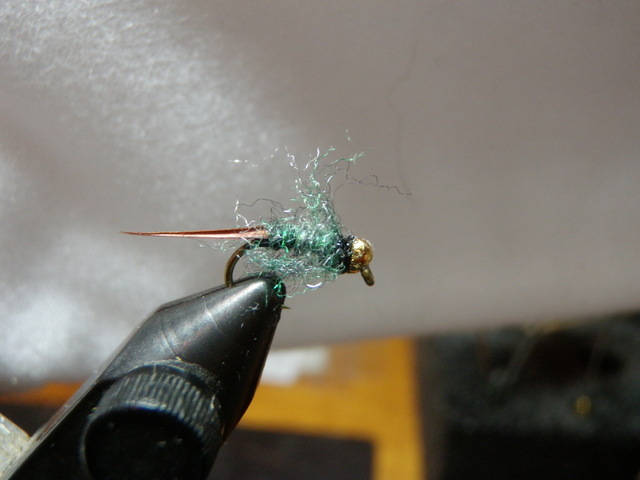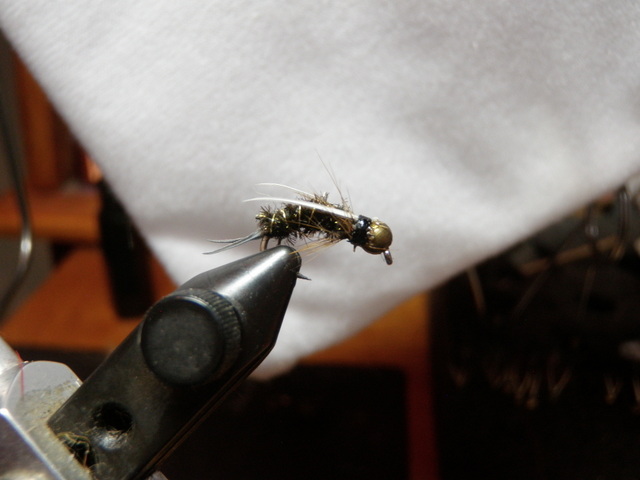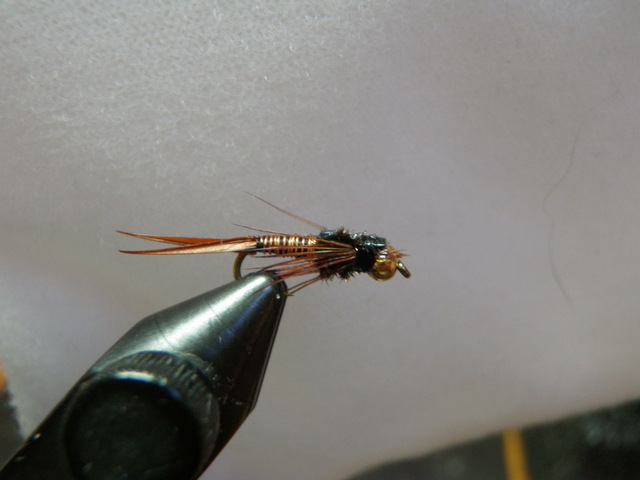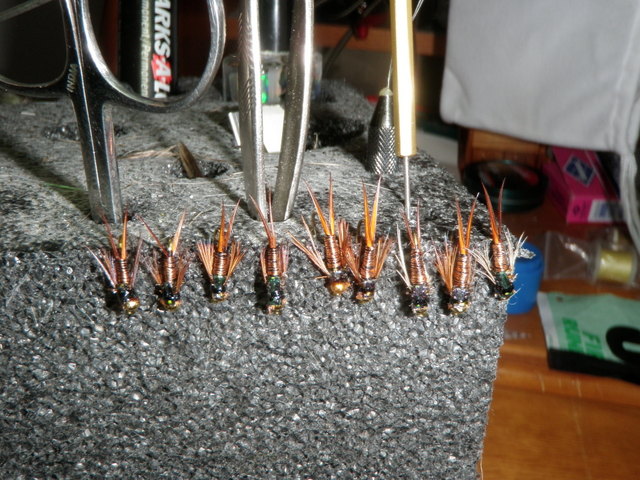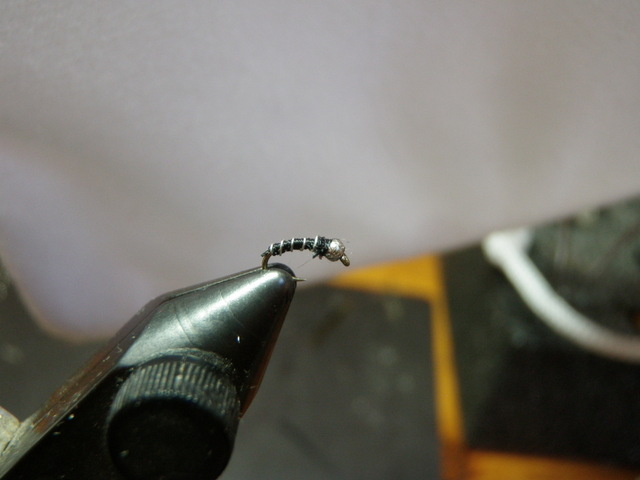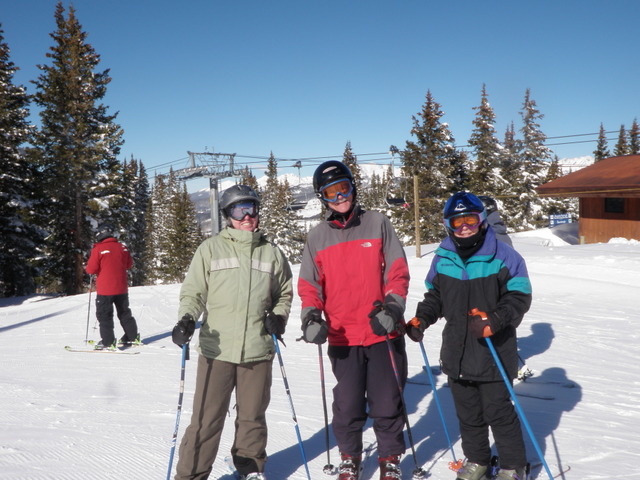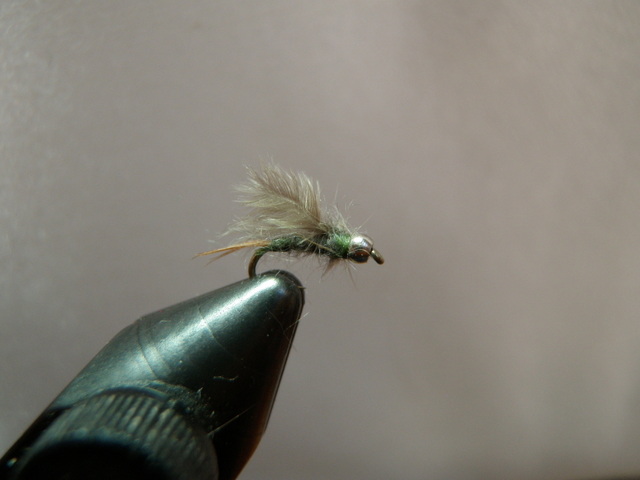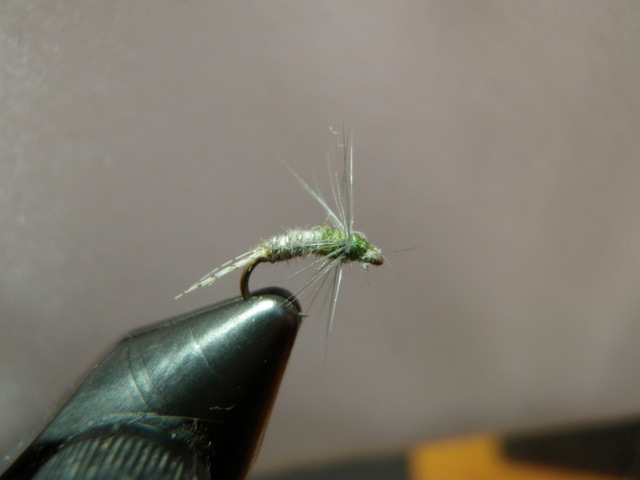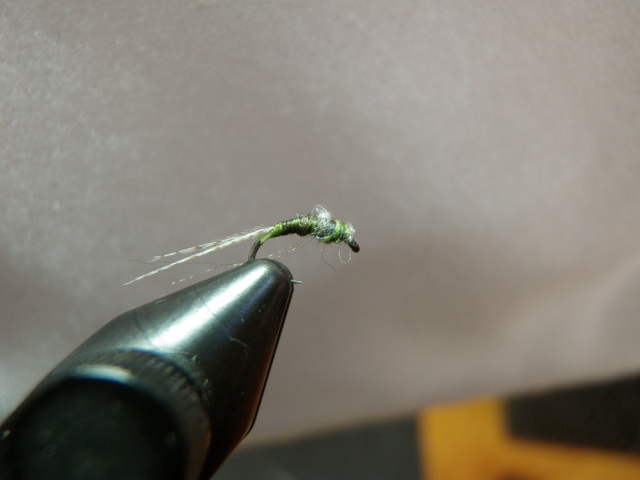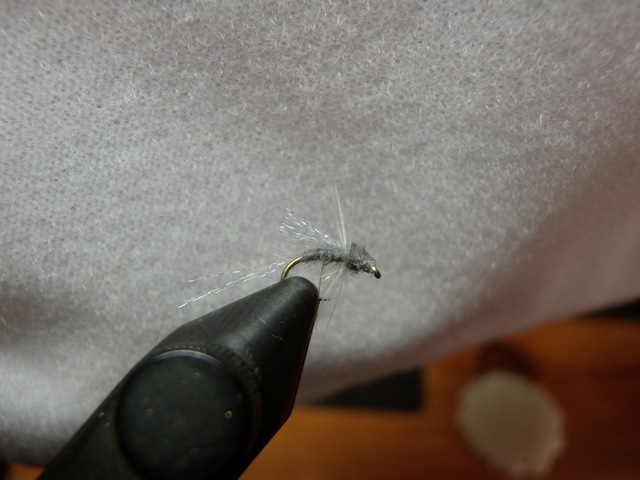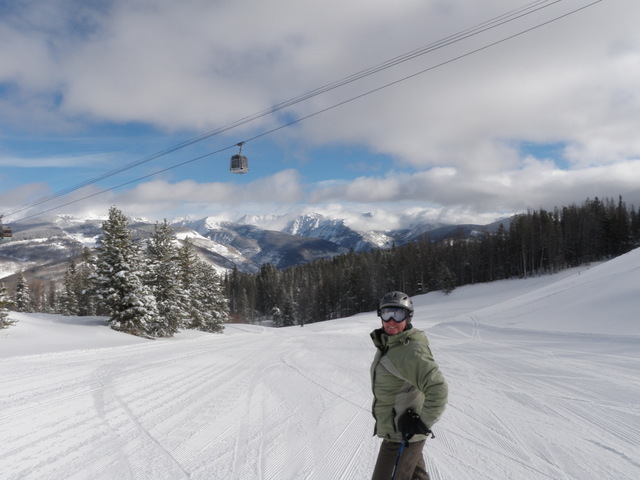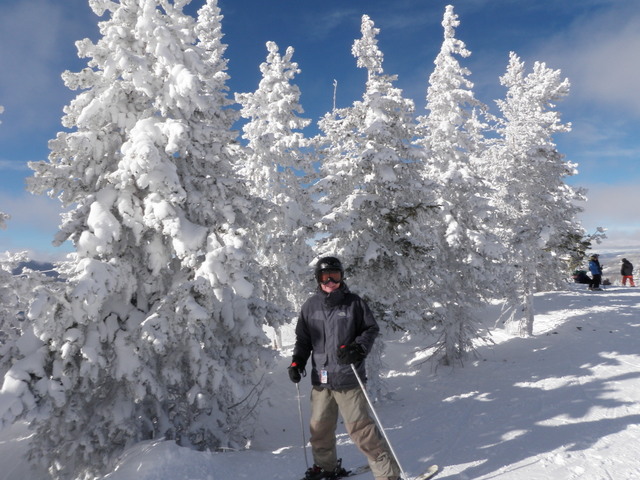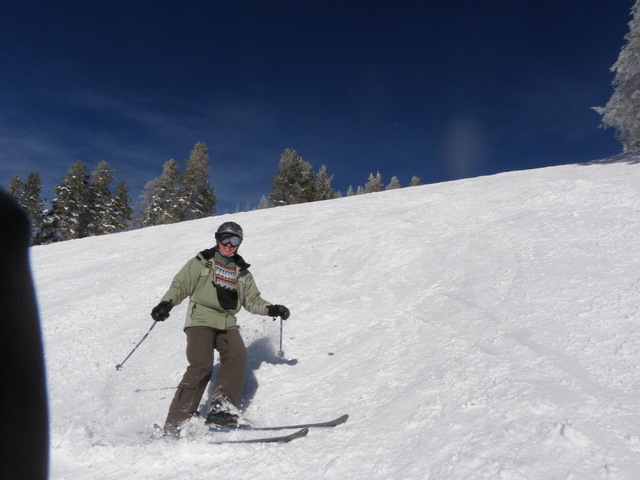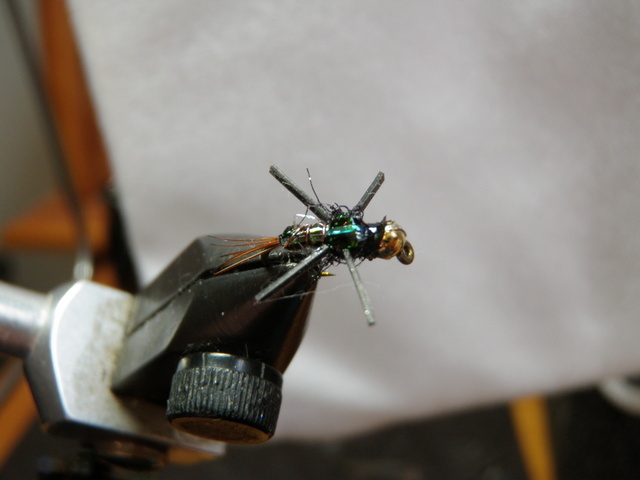Dollar Shave Club 01/18/2014 Photo Album
I was probably nine or ten when I would sit in our living room in Boyertown, Pa. and watch a sporting event with my father. Although it is now fuzzy in my memory, I seem to recall we were watching a football game together, and I asked my father which team he was rooting for? He replied with the name of the team he favored, and I followed up with the inevitable question, “Why?” Dad paused and replied, “Because I like rooting for the underdog.” That brief experience molded my character forever going forward, and while it has often resulted in frustration and sadness, it also forms a fundamental foundation for what drives me through many life experiences. I’m nearly always a fan of the underdog.
This preference for the underdog has carried over beyond sports teams to the business arena. One reason I love to read the Wall Street Journal is to follow businesses and corporations in their journey through the ebb and flow of financial success and failure. I particularly love the in depth features that delve into the fabric of companies and the strategy and thinking that makes them what they are. This all brings me to another underdog story and how it touched my life.
In my younger days because of my red hair I could get away with shaving every other day, but for some reason, as I’ve aged I’ve been forced to follow the shaving ritual on a near daily basis. Fifteen years ago I purchased a Gillette Sensor Excel razor, and I’ve been using it faithfully ever since, but the price of replacement blades has been an ongoing irritant. For a while I discovered some cheaper generic Kroger two blade cartridges, and kept a supply of these in my drawer to partially temper my frustration with high blade prices. I also received a free supply of disposable razors from a previous neighbor and my brother, but I discovered that these dulled quickly, and I didn’t like the light plastic feel.
In order to prolong the interval between the agony of purchasing overpriced twin blade cartridges I resorted to using one cartridge for three to four weeks before replacing. Only when it was necessary to drag the dull blades over the same difficult patches of stubble on my face multiple times, did I take the plunge and buy a new pack of replacement blades. This cheapskate approach to shaving served me well until the last year or so, when after a remodeling of the local King Soopers, I discovered that they no longer stocked the generic twin blades. I gritted my teeth and purchased a five pack of Gillette twin blades for an obscene price in excess of $20, and I milked these cartridges for six months.
Unfortunately I inserted my last cartridge from this pack into my razor a couple weeks ago, and when I visited the local supermarket discovered that their buyers no longer stocked twin blades of any sort. What was I to do now? I needed to either purchase the ridiculously overpriced and over engineered four blade cartridges or even worse a six blade system, or find an alternative source for my ancient twin blade razor.
Enter the internet. I fired up my browser and began searching online for generic twin blades, and I discovered that Amazon offered five packs for roughly $17, and I filed this information in my memory banks while I continued to search for alternatives. $17 for five cartridges equals in excess of $3 per cartridge, and in this day of inexpensive flash drives with gigabytes of storage, I refused to believe that someone could not manufacture a decent twin blade cartridge at a lower cost. In fact, I thought to myself that there might be a business opportunity to manufacture replacement blades and offer them to the marketplace at a slight discount off the prices charged by the market leaders, Gillette and Schick.
I decided to defer the purchase until I could do more research, as I was convinced there was a better deal. This research took place on a weekend, and the following Monday morning when I started up my computer at work, I noticed a link to a story about Dollar Shave Club. I thought it was ironic that this popped up in the same time frame that I was searching for a razor blade deal, so out of curiosity I clicked on the link and the browser took me to a page featuring a video. I plugged in my earbuds and clicked the play button and was entertained by a fast paced “in your face” style of ad for Dollar Shave Club. I was now very curious so I transferred to the Dollar Shave Club page and clicked on the offer and then chose the humble twin option. Dollar Shave Club was offering five twin blade cartridges per month for $1 plus $2 shipping for a total of $3 per month.
I did some quick math and estimated that I was buying 2.5 packs per year or 12 cartridges at a price in excess of $20 per five pack so this equaled an annual razor blade cost of close to $50. The Dollar Shave Club deal would cost $36 per year, and five blades per month meant I could replace my cartridge every week. The deal seemed very inviting, but I searched on Dollar Shave Club reviews and read four or five accounts to assure myself that the company was legitimate and the blades were good quality. Nearly all the reviews verified the quality and confirmed the legitimacy of Dollar Shave Club, but I still waited another day before placing an order.
On Tuesday I decided that I would make the plunge and joined the club. Unfortunately there was a glitch with the web site order process, so I had to chat online with a customer service representative, but eventually my order was placed, and I could see it on my club membership page.
With this task now out of the way, I was fascinated by this new entrant into the shaver market, and I wondered how the underdog was faring. I did some more online research and discovered that Dollar Shave Club began offering their service in April 2012. At the time of the Dollar Shave Club launch Gillette held 80% of the razor market and Schick trailed at 18%. Simple math told me that the two big guys comprised 98% of the razor market. I began searching for information that updated the razor market share to 2013 numbers to see if the underdog Dollar Shave Club was making any inroads, but unfortunately I was unable to uncover any new information.
I did, however, find some interesting articles that critiqued and applauded the Dollar Shave Club strategy, and one of these identified the manufacturer of the blades offered by DSC. I checked out the source and found that I could buy bulk packs of blade cartridges directly from the supplier of DSC for under $1 including shipping. I decided to remain in the club for six months to see how the service pans out, but perhaps eventually switch to buying direct from the supplier.
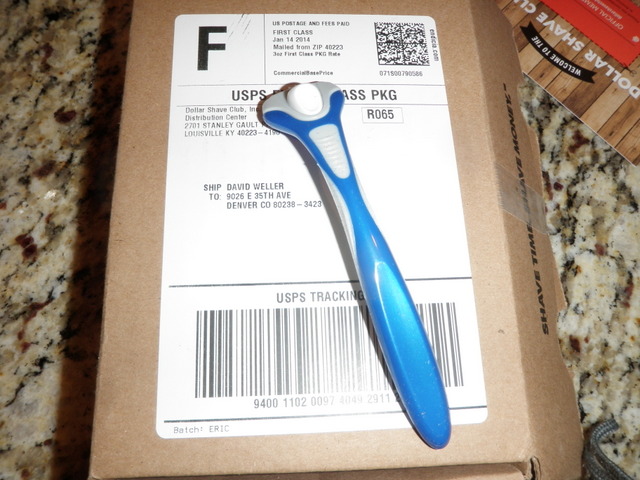
A New Dollar Shave Club Razor
When I checked the mail after my run on Thursday I found a small cardboard box and quickly carried it back to the kitchen where I opened my DSC razor and pack of five blades. I’m happy to report that I’ve now used the razor twice, and it delivers comparable shaves to a new Gillette cartridge. The razor itself is all plastic and it makes small squeaking noises as it shifts across my face, but it is certainly adequate for a light beard like mine.
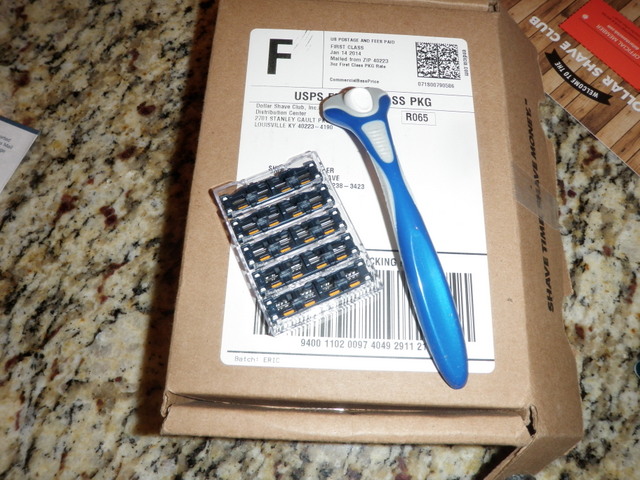
And Five New Cartridges for $3
I’m still pulling for the underdogs to make a dent in the razor market. My dad cheered the underdog, and I will follow in his footsteps.
Like this:
Like Loading...

